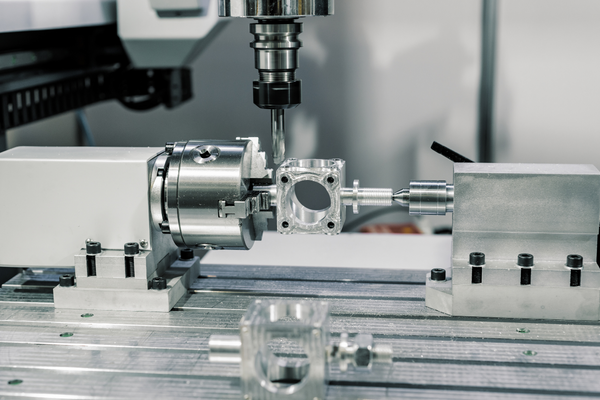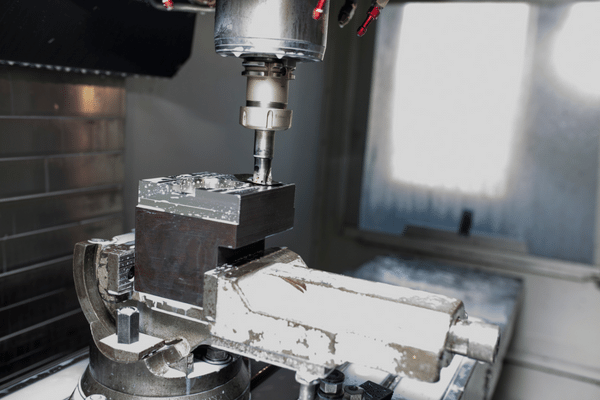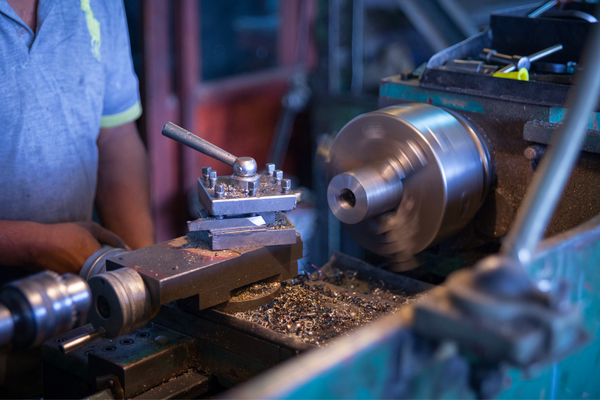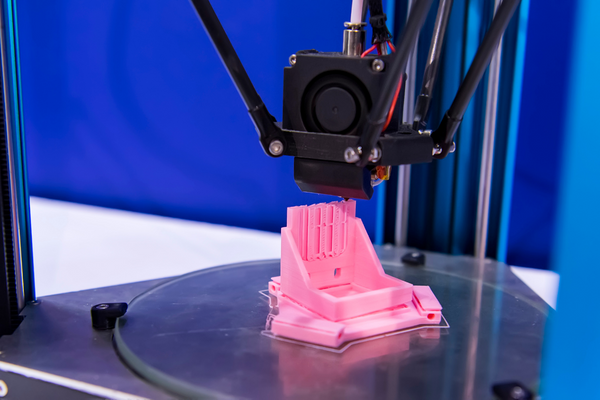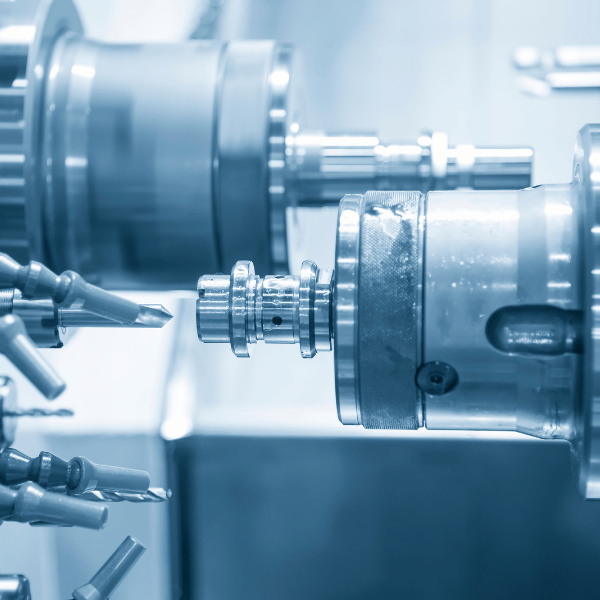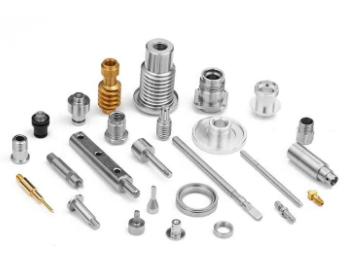CNC machining and conventional machining are a lot of things. In this blog, we will help you see the difference between these two and which one can be used as an aid to do your work easier.

What Is CNC Machining?
CNC machining, also known as computer numerical control, is a manufacturing process used to produce parts. The process uses a computer to control the movement of the machine and cutting tools. CNC machining can be done with various tools, including milling machines, lathes, and drill presses.
CNC machining is often used to make metal parts out of solid metal blocks using drills or mills. It’s also used to make plastic parts on CNC routers. The advantage of CNC machining is that it can produce precision parts quickly and at a low cost compared with other methods like handcrafting.
CNC machining has roots in older technologies such as manual lathe turning and milling machines from the 1800s powered by compressed air or water pressure instead of electricity. These early machines required skilled operators who could program them by hand using instructions written on paper for each part they wanted to make.
Modern CNC machines use electronic controls that can be programmed remotely by computer software or manually by an operator with a simple interface such as a computer keyboard or touch screen display panel. The software then sends instructions directly to the machine controller over a network connection such as an Ethernet cable or WiFi link.
What Is Conventional Machining?
Conventional machining is the process of creating a p material from a solid block of material, also known as stock.
Conventional machining consists of several different processes:
Turning: A turning operation is done on a lathe. Material is removed from the workpiece using specialized tools such as cutting tools, broaches, reamers and taps. The tool is held in a chuck at one end of the lathe while the other is rotated at high speed by an electric or hydraulic motor. Turning can be used to produce internal features such as interior slots, external features such as threads and grooves, and profiles such as tapers and shoulders.
Milling: In milling, material is removed using rotating cutters that ride along an axis parallel to the bed of the machine. A milling machine has multiple axes of movement, so it can perform complex operations like contouring surfaces or creating three-dimensional shapes from blocks of solid stock material. Milling machines commonly have three axes that allow them to move in any direction relative to the workpiece or vice versa (XYZ). Most CNC machines are capable of milling operations because they can move multiple axes simultaneously without human intervention. Milling is performed on various materials and with a variety of tools. The most common materials include wood, plastic, aluminum, brass and steel. Common milling operations include drilling holes, creating slots or grooves in flat surfaces, shaping circular components like wheels or gears and many others.

Advantages Of CNC Machining Over Conventional Machining
The advantages of CNC machining over conventional machining are many. The following are some of the main advantages:
Cost savings
The cost savings in CNC machining is due to several factors. The first is that it eliminates the need for manual labor. Secondly, there is no need to have expensive tooling and jigs. Thirdly, using automation means you can work on multiple parts at once instead of just one at a time. You can also save on storage costs as you don’t need to store tools or jigs. Finally, there are no other costs associated with conventional machinings like sludge removal or dust collection systems.
Accuracy
The accuracy of CNC machining is much better than that of conventional machining because it eliminates human error and reduces the chances of mistakes being made during the machining process. It also allows for greater flexibility in terms of tolerances and precision required by customers.
Speed
CNC machining is much faster than conventional machining since it uses computer-controlled machines and robots which can work 24 hours a day without stopping (although this depends on your business). You also don’t have to wait for an operator or worker to be available before starting work on a project. This means you can finish your work much faster than before because there is no waiting time involved. You can also set up multiple CNC machines and have them run simultaneously, which reduces the amount of time it takes to produce parts in bulk (if this is what you need).
CNC Machining VS Conventional Machining
Conventional Machining
Conventional machining is the oldest form and has been used for hundreds of years. It involves using hand tools to move material through a series of cutting operations, typically using dies and punches to create parts from bar stock or other pieces of metal. One advantage of this method is that it’s usually cheaper than CNC machining since you don’t need expensive tooling or complex machinery. However, it’s less precise than CNC machining so more scrap can be produced during the cutting process. Conventional machining also takes longer than CNC because it’s done manually rather than automatically by a computer-controlled machine tool.
CNC Machining
CNC stands for computer numerical control, which means that machines are controlled by computers rather than people controlling them manually, like in conventional machining. This allows machines to perform repetitive tasks much faster than people can manually, so they can be used in high-volume production lines where hundreds or thousands of parts need to be made at once.

Is CNC Machining Better Than Conventional?
CNC machining is a process in which computer numerical control (CNC) machines create parts. CNC machining can be done with a variety of different tools, but it is often used to produce high-quality parts that are accurate and consistent.
There are two main types of CNC machinery: vertical and horizontal. Vertical CNC machines use a rotating spindle to cut materials like metal, plastics, or ceramics into the desired shapes. Horizontal CNC machines use a cutting bit that moves back and forth along the material’s surface while being cut by the spindle. Both machines require toolpath programming to generate instructions for how they should operate to complete their tasks effectively.
Conventional manufacturing methods involve using large machines called lathes to turn raw materials into finished products using a series of complex motions and cuts that can take hours or even days for one piece. These machines are very expensive (upwards of $1 million or more), which makes them impractical for small businesses or hobbyists who may only need them infrequently.
CNC machining allows businesses to create custom parts with greater accuracy and consistency than traditional methods at lower costs by using computers instead
Conclusion
Despite all the apparent differences, achieving the result is usually the same. The primary reason CNC machining gets its classification is the computer behind it. It breaks down a complex shape into thousands upon thousands of simple, minute instructions to create an incredibly complex object. Like conventional machines, CNC machines require a lot of time and patience to create these machines and achieve these results.


